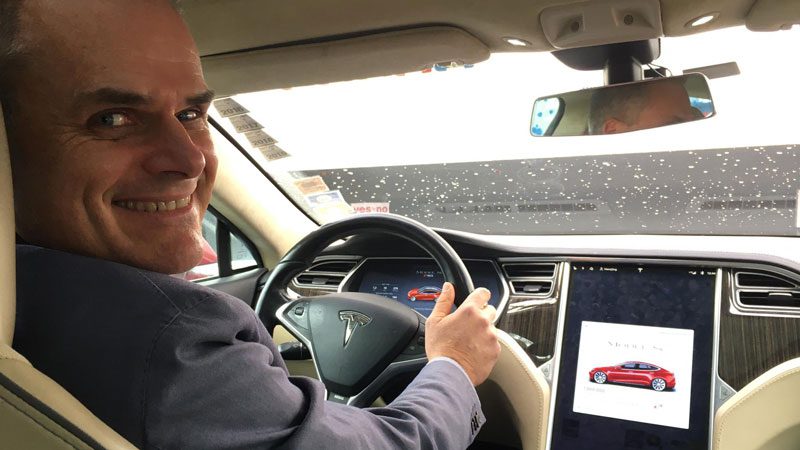There is no doubt electric vehicle (EV) owners in Australia fall in love with their EVs and rarely take a step back into the past. But getting drivers into an EV in the first place is the tricky bit, a new report shows.
Lingering concerns around servicing, long-term battery life, and range and charging infrastructure remain the key fears cited by Australians still driving internal combustion cars and trucks, and which are preventing them from making the jump, according to a study by car mechanic chain MyCar.
Intriguingly, the number of people saying these factors are deal breakers are falling, yet only 14 per cent of the fossil fuel drivers questioned in the survey said their next car would be electric.
Of the 2004 people surveyed who also drove petrol and diesel cars, only 40 per cent said range and access to charging infrastructure was an off putting factor and less than half were worried about long term durability of EVs. Just 38 per cent said high upfront costs were a barrier to making the switch to an EV.
“Overall, we expect the EV market to continue its growth trajectory as the public becomes more aware of the benefits and practicalities of EV ownership,” the report said.
“The current EV owners we surveyed reported high satisfaction with their vehicles, in part driven by reduced need for maintenance … these responses demonstrate a promising outlook for the future of EVs.”
EV takeover
Indeed, slicing and dicing sales figures over the first six months of 2024 show just how promising that future is.
February recorded a monthly record for EV sales – pure battery cars that is – at 9.6 per cent of total new car sales. What those figures show is that one portion of the new car market is now almost entirely electric: the “medium” passenger car market, or what was once called the family sedan.
EVs took up 85 per cent of that market for cars priced above $60,000, and 64 per cent of the whole segment.
However, what was also clear at the time is that while buyers of more expensive cars have decided that electric is the way to go, Australians looking at the sub-$40,000 end of the market are yet to be convinced.
The market for used EVs is ticking up, as car fans look to the secondhand market to buy mainly Teslas, and in the first six months of 2024 EVs made up 8.7 per cent of new cars sold.
That old chestnut: range anxiety
While range anxiety is a real barrier to EV ownership, more and more research is also showing that drivers now comfortable with the new way of estimating time left on the road are taking more trips in their EV than in a fossil fuel car.
A BNEF chart reported by TheDriven in June shows that in large EV markets, these vehicles are driven far more often than their fossil fuel counterparts, as fuel is cheaper and they require less maintenance.
“Supporting the transition from traditional, trusted vehicles, requires a holistic approach that starts with education on the benefits and practicalities of EV ownership and continues by ensuring the automotive industry is equipped to facilitate the shift in terms of infrastructure,” says Australian Automotive Aftermarket Association CEO Stuart Charity.
Australia is ramping up investment in charging infrastructure, with the country logging 1000 fast charging sites in July continuing just over 3000 plugs.
Toyota is installing more than 600 charging bays in its dealerships and helping customers install chargers at home, as it races to catch up in EV markets. And state and federal governments are rolling out grants to speed up charger installations, from New South Wales’ funding for kerbside charging to Ampol’s $100 million from the federal government to roll out 200 charging bays by 2025.

Rachel Williamson is a science and business journalist, who focuses on climate change-related health and environmental issues.


On Toyota’s 600 charging bays, why would anyone want to charge their car at a dealership?
I don’t know what Toyota’s plans are, but Kia has free charging for Kia owners at their dealers.
Nothing is free
In Townsville, the Toyota dealer has more (working) DC chargers than the rest of the city combined. That would be a good reason to charge there. Actually, they may have more DC chargers than they have EVs sold.
True, there’s no going back once you’ve owned EVs: torque, acceleration, fuel costs, silence & the rest. I would also say that in my six years of experience here living in a capital city, that range anxiety has been nonexistent. In practice, 95% of the charging has been at home, offpeak & in the times we do go away in the car, there have never really been any significant issues with public DC charging.
YMMV of course but that would really depend on if you needed to rely on regular longer distance driving for work or similar; perhaps that’s where the newer PHEVs might well still fit in, BYD’s new DMi tech for example.
In the cities though, could easily progress further downward in terms of range & vehicle size, STILL no options here in AU as yet, eg, like the Dogood or the Microlino.
https://www.youtube.com/watch?v=-hueNFcYzE8
https://www.youtube.com/watch?v=aC8uvlzFXdU
I’m looking forward to seeing the Leapmotor T03. It looks like a Daihatsu Cuore, though I haven’t checked the dimensions to see how it actually compares.
EV market share will continue to grow this slowly until more public charging becomes available in large towns and capital cities. It is that simple.
This token 1 or 2 chargers at a shopping centre, local Club, service station, electricity power pole etc was okay 5 years ago but not practical now. We need 25kW – 50kW stations everywhere especially around apartments and inner city suburbs. The larger bunnings carparks for example could easily have 20 AC chargers and 10 DC chargers and not impact parking for other customers.
Yes it cost money but it needs to be done properly and quickly
The mechanics and maintenance revenue dependent dealership associations are fighting dirty in their fud campaign to keep their glittering palaces viable.
MAGA’s existence and the Brexit catastrophe both prove that nonsense is still an enticing product in the third millennium. You can definitely take a horse to the water…….
Lots of good talking points Rachel IMHO.
The hard part is to get those new to EVs to get behind the wheel.
That’s where grass roots events from state and regional (especialy country region) clubs such as test drive / info. days are vital.
The AEVA (Australian Electric Vehicle Ass.) are doing their bit.
The transition to EV transport in Australia is happening but could go a lot faster if the Fed Gov got out of bed with fossil fuel infra. lobbyists.
Drive from my home to Melbourne for a medical which is a 11 hour round trip. Easy to find fast chrging at country locations but Melbourne is complicated, you need to get too far off your route to find any. Try to find a convenient fast charger on the Geelong route into Melbourne. Altona Gate seems to be the only one and you have to leave the freeway altogether.
We need charging stations set out like the present ICE service centres.
You need to pay for it
How about the Tesla Supercharger in Corio?
6 Superchargers up to 250kW, Available 24/7
CCS Compatibility
This Supercharger is Open to Tesla and Other EVs with CCS compatibility
Sales down and still making a spin.
9%out of 100 makes it still a rich yuppies toy
% is always out of 100. Bogan maths?
The EV skeptics are the same people who didn’t want to switch to smart phones ~15 years ago. The same people prefer their horses over ICE cars ~100 years ago. But people have no issue switching or trying vaping instead of smoking ~10 years ago.
People only change to benefit or having incentives for themselves. That said, if we want to have a better future for generations to come, these need to be driven by federal policies.
Odd comparison, vaping is proving to be that much worse for people’s health, and the government’s pockets, that they are banning it.
Back to tobacco I guess?
Yep, range anxiety if you travel long trips which we do regularly is one restraint on EV sales.
Charging infrastructure and having to of freeway to find a charger is another.
The huge amount of retained value loss( Tesla 3 $20,000 over 24 months) is another,
Quality of Chinese cars(not even to industry standards) is another.
Lack of service points is another.
The fantastic hybrid and ICE cars available is another,..??
I have never had range anxiety in my EV, had it a number of times in ICE vehicles.
charging infrastructure is better than most ICE drivers think and I have had to get off the freeways just as often to refuel an ICE car.
I believe the retained value will soon improve.
The quality of Chinese cars is better than American cars and, these days, just about as good as Korean or Japanese cars
Service points are less of a concern when the cars barely need servicing.
Don’t know any “ fantastic ICE cars in comparison to EVs.
Depending on how far you have to go, range anxiety would also be an issue for ICE cars. For the vast majority of people, no EV has less range than you would use in a day around town. Ok, maybe an uber driver on a 16 hour shift might be worried….. Seriously though, range is the last bastion of hope for ICErs trying to besmirch EVs. How many ICE people have a conversation: “How far does your petrol car go? Only 450km, I think that would give me terrible anxiety….”. Nobody even asks about range. Efficiency, performance etc, but not range. Why bother with an EV? Unlink an ICE car, there are millions of places you can “refill” your EV. It might take a while, but you can do it. You can’t make your own petrol in the middle of the desert if you get your ICE range wrong, or the charger – I mean petrol station is out of action.
OK, I have taken my pills – I can calm down. Stop talking about range, the only people who care are employed by Toyota (in one way or another).
PS. Please don’t take this seriously.